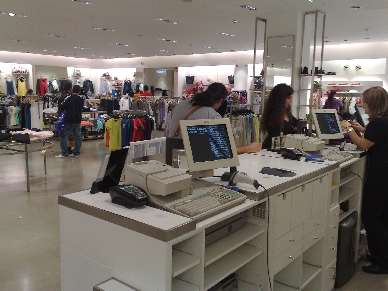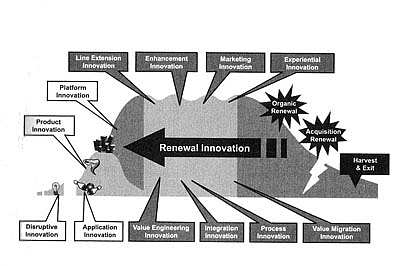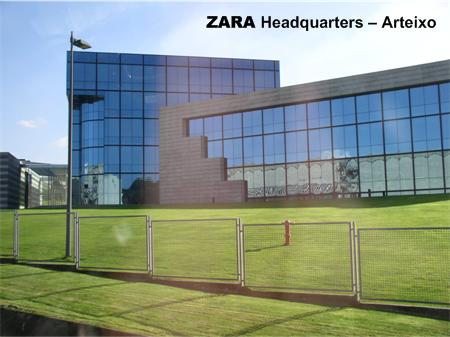 Zara, Inditex group, is a phenomenon on the garment retail industry and a reference for many Worldwide medium size companies that looks on Zara the way to a global succeed without leaving the business where they are, regardless how competitive it is and without leaving headquarter location regardless how away are form the hot hubs.
Zara, Inditex group, is a phenomenon on the garment retail industry and a reference for many Worldwide medium size companies that looks on Zara the way to a global succeed without leaving the business where they are, regardless how competitive it is and without leaving headquarter location regardless how away are form the hot hubs.
This post tries to highlight some relevant topics regarding the relation between Information Technology (IT) at Zara and their competitive strategy and the role innovation plays.
Where is the innovation at Zara? What is innovative about Zara’s approach?
At a first glance we are prone to say Zara innovation is on their business model, also in the way he arrange their supply chain, or in the way he collect customer needs to develop new products and many other surprising practices … it seems to be a company plenty of innovations.
But rather to address this question under a taxonomical perspective (application, product, process, marketing and business model innovation), we can rely on the conceptual framework provided by Geoffrey Moore when he compares the classical “product life cycle curve” with the “technology adoption product life cycle” and going an step further, declaring the kind of innovations can occur at each stage of the cycle when “aligning innovation with the life cycle”. In this way we can realize how impressive Zara approach is regarding innovation and explain why when we ask this question a branch of different answers appears.
 Let start to apply the analogy.
Let start to apply the analogy.
In the early market, when a new technology is introduced, it is embraced by the early adopters, and if it succeed follows a fast and growing ramp of acceptance. In the same way, looking to the product itself, the garment, Zara follows the fashion trend innovatively, they generate new product “on the fly” with inputs from the customer aims (to follow Rock star dressing style) and customer practices (what at the end customers really buys). Zara collect this market inputs with design teams participating on relevant events all over the world and with the help of real time sells data from their stores. There is also fashion early adopters and Zara has the tools to track the trend. Furthermore, Zara has the trick to cross the chasm, product fertility and market fertility, this means produce a broad range of designs looking for the successful one (we will see later the way to this on a cost effective way – small batches– ) and test them on different markets (unsaturated logistic chain). This practices were not usual on the garment industry until Zara arrives, Zara innovates.
When there is a successful collection, we are at the early main street following G. Moore jargon, Zara innovates on the “process” to attend such a growing demand, at this stage we are speaking about procurement, manufacturing, distribution, etc. Here the innovation is on the application to the fashion and garment industry what previously was applied to the automotive industry by Japanese, this is to manufacture a product driven by the demand “pull” (Toyota techniques) instead of “push” products to the market based on demand forecast.
With mature products, Zara try the “experiential” and “marketing” innovation. That’s why the shops layout are carefully defined, the shops located on premium areas, the shops redesigned every four years and created a rich portfolio of brands.
Zara don’t stop, when under a traditional point of view all the leverages had been attempted, Zara keeps innovating defining a new “business model” in the garment-fashion industry, that is changing from a model of “4 collections” a year (for seasons) to a “collection every 3-4 weeks”. In this way sales turnover could dramatically increase.
What strategic benefits does Zara get from its IT investments?
A benefit is strategic for a company if it is the enabler to provide superior performance to the company and is coherent with the company strategy. The Zara strategy is twofold, it wants to be able of closing the loop between clothing design and sales in the shortest possible time and to differentiate offering new fashionable designs. To attend this challenge the company has to be agile and flexible. To achieve an outstanding level of agility and flexibility the company relies on the way people is organized and the way information flows inside the company, that’s why Information Technology plays a key role inside the company. Roughly, the IT Zara invest is the one that allows Zara to capture the customer demand on real time (PDA), is the one that allows to be fast on the logistics (POS and MODEM), is the one that allows to make fashionable designs fast and in a cost effective way (CAD), etc.
What are the most important aspects of Zara’s IT strategy?
Once we know Zara rely partially on IT to be a fast and flexible company, they will use an IT technology that solve – not creates – problems. Regarding the POS, which is the case gadget, it has to be upgradeable on a day by day basics, while the stores are open and selling, it has to be possible to set up a new device without technician presence, and because the business process are embedded into the software applications, they know better than none how to fast attend the new needs, that’s why they have their own developments.
Zara manages the use of existing technologies and their application to their needs, and also manages a good tradeoff between in house developments and outsourcing.





Recent Comments